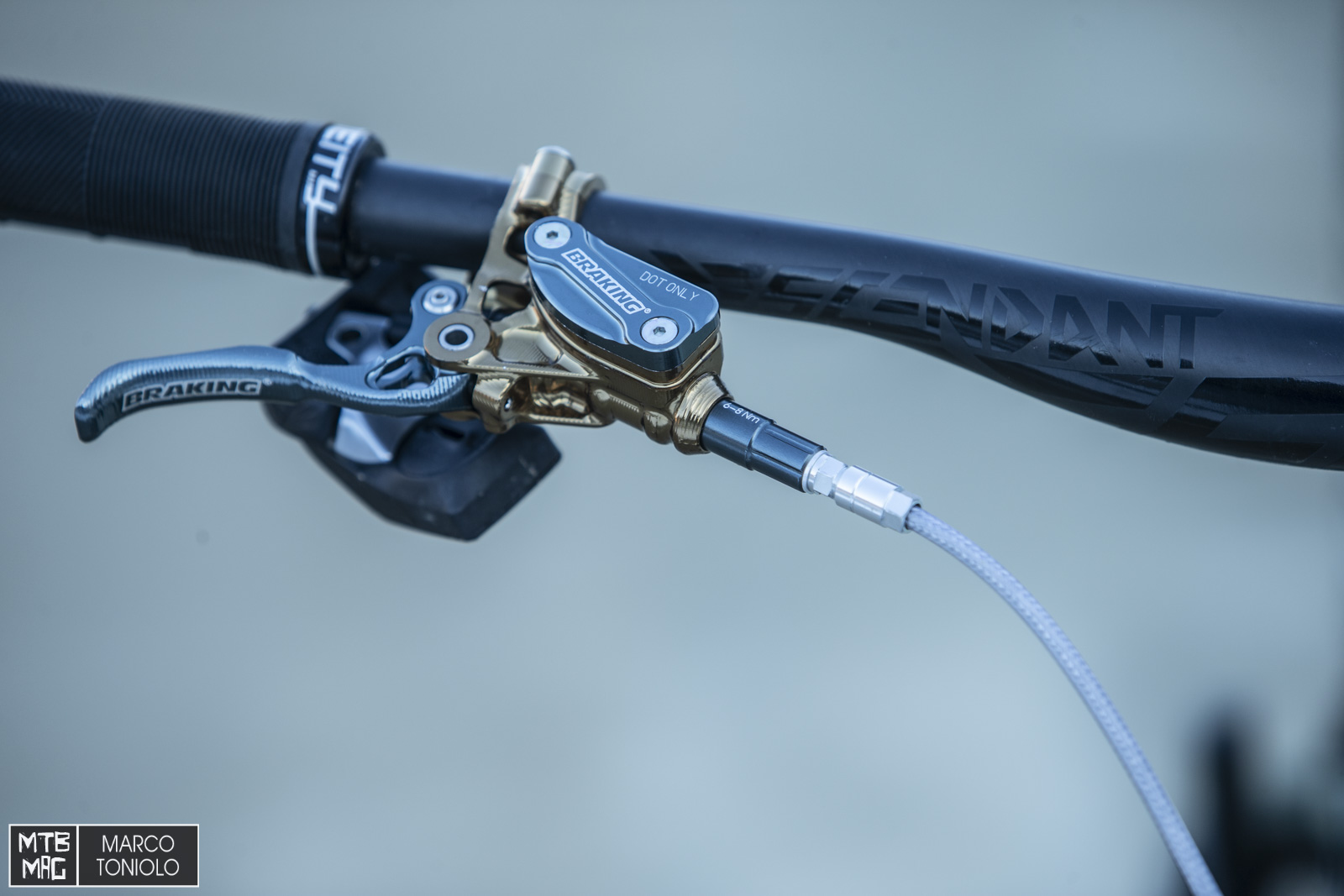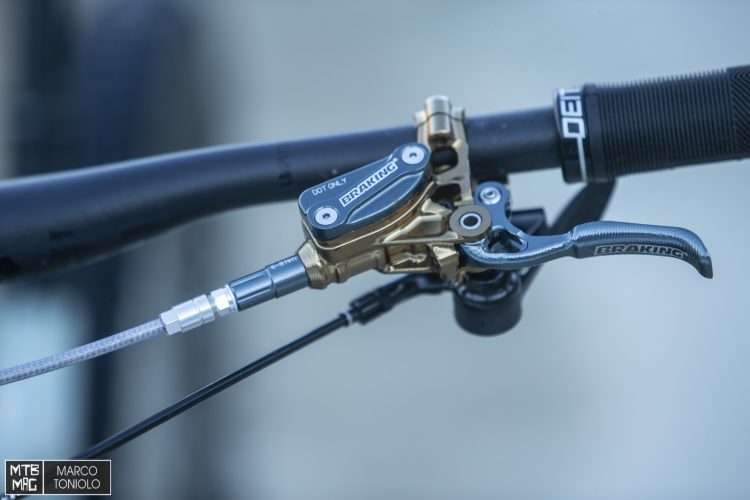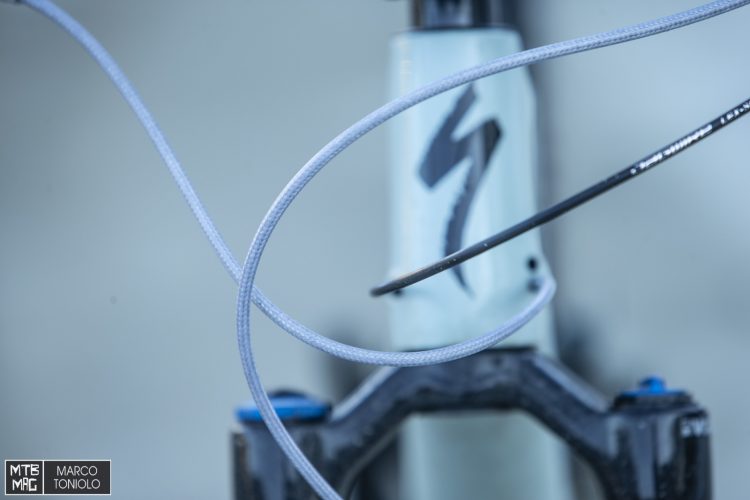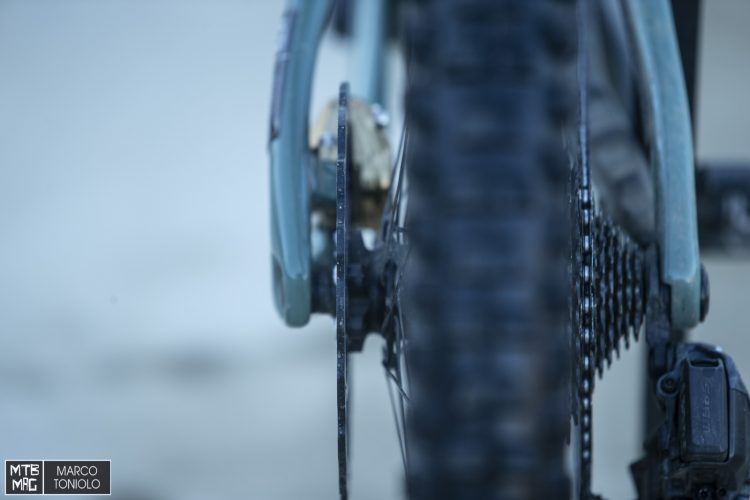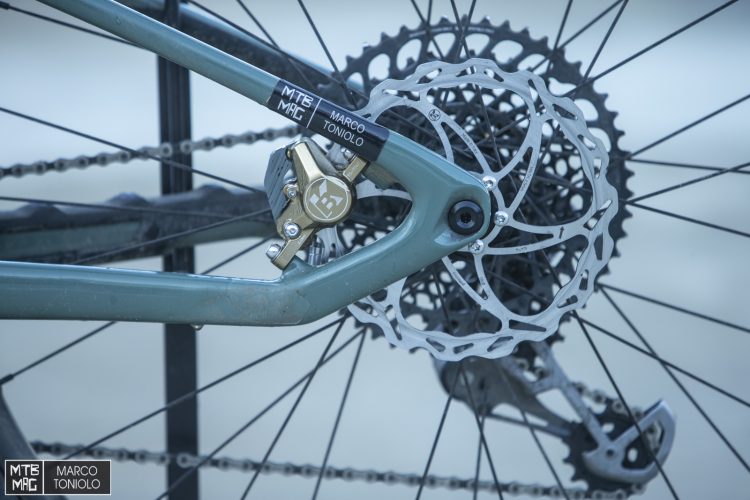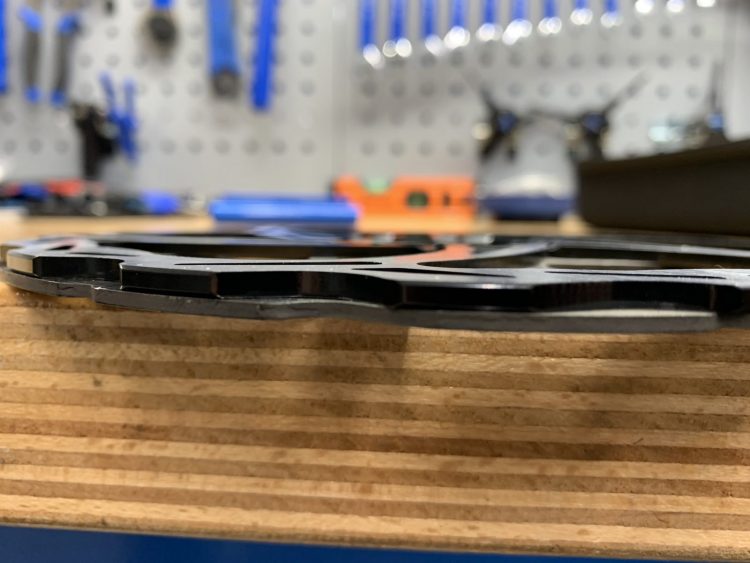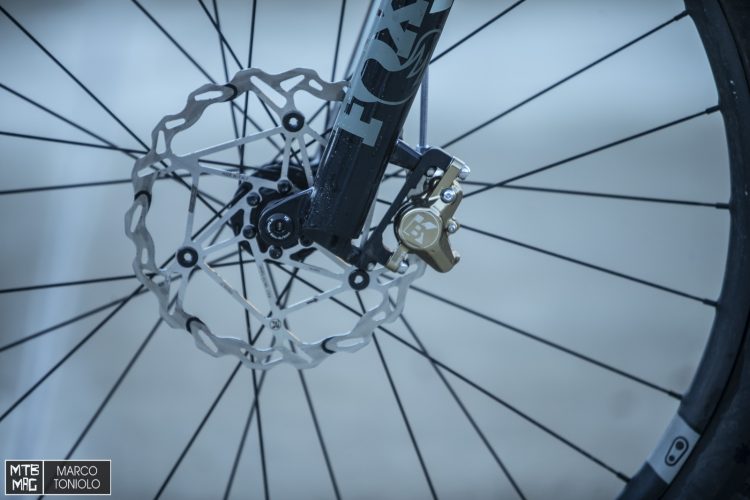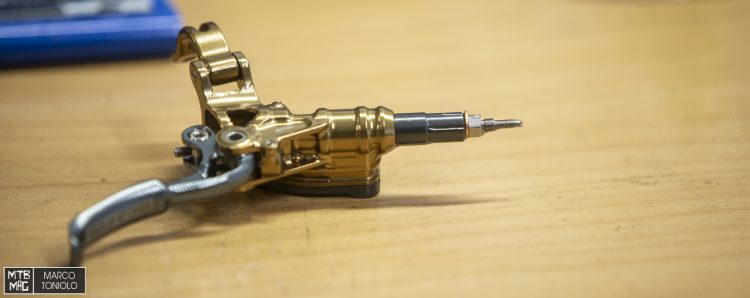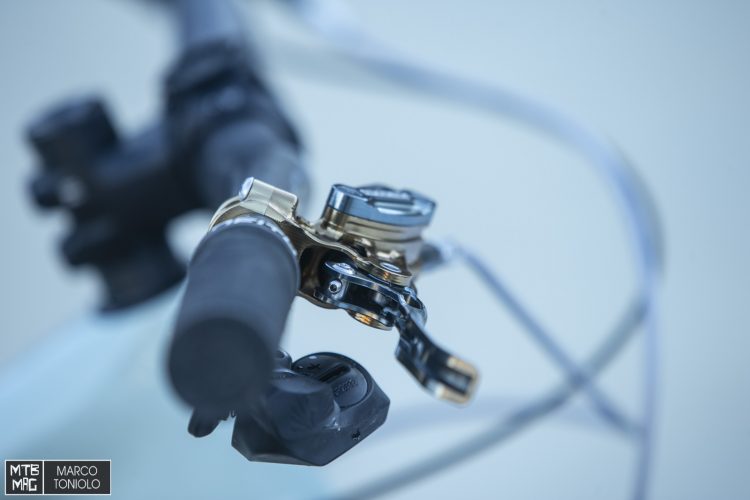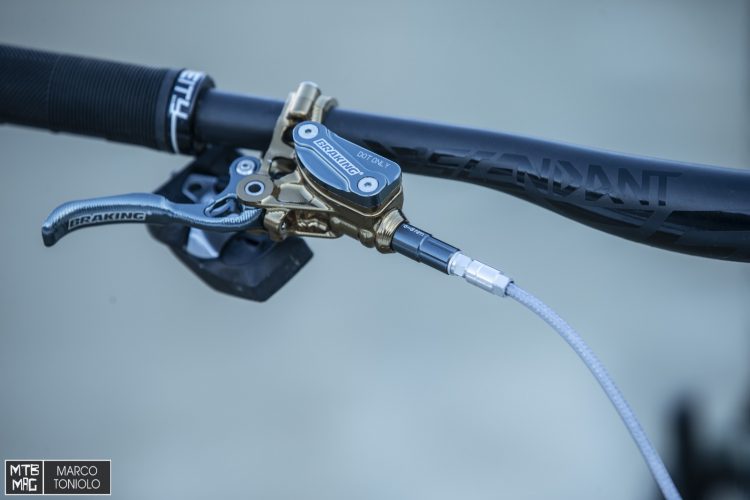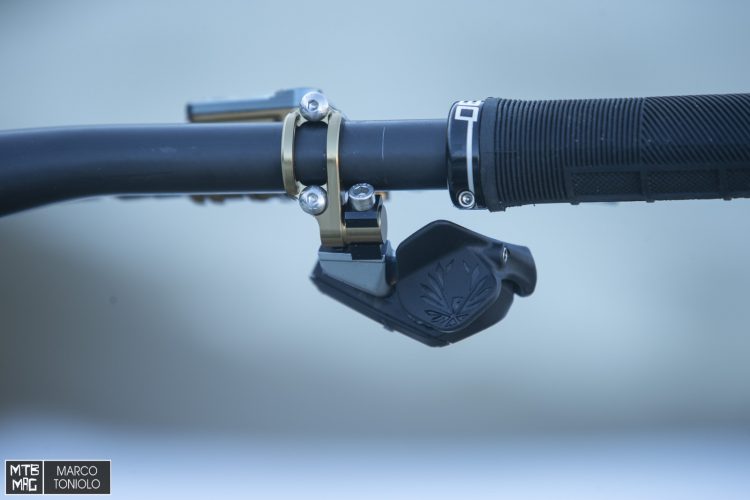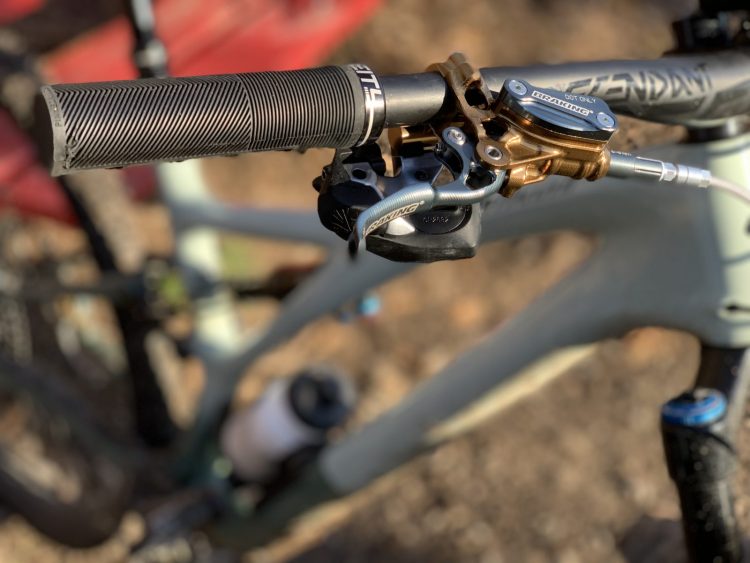The Italian company Braking today presents the evolution of their INCAS brake, the 2.0. The substantial difference with previous version is the possibility of mounting a 3mm thick disc, in combination with a caliper that has a ventilated spacer. Such a massive disc will be more difficult to warp and therefore will have less fading.
I installed the new system on the Specialized Stumjumper that I tested a few weeks ago, well aware that the 3mm disc is designed for a heavier use and above all, since it is at the rear, it is suitable for heavy riders and bikes, namely e-bikes. Not only that, its greater robustness meets those who are heavy on the brakes, especially at the rear, with a nod to the many beginners who have entered the bike world in this crazy year.

Features
Lever body and caliper in aluminum machined from a solid block and CNC’d with a high quality finish.
High strength aeronautical braided steel cables, 5.7 mm in diameter. Being too thick for the Stumpjumper’s internal guided routing, I opted for the thinner 5mm.
A ventilated billet aluminum spacer is CNC machined to accommodate the 3 mm disc and at the same time dissipate the heat produced by the caliper.
Wave fixed disc with 3 mm thickness to choose between 180 mm (235 gr) and 203 mm (260 gr) diameter.
To help you visualize the difference with a “normal” disk, here they are one above the other:
If you have previously purchased the Incas 2.0 braking system, it will be possible to “upgrade” it by purchasing the 3 mm disc and the ventilated spacer separately. The caliper I mounted on the front is the classic one from the INCAS system, without spacer for thick discs. The disk is semi-floating.
The 3 mm discs are only compatible with the Incas2.0 brake system.
The 3mm kit includes:
- Braking system
- Carbo-metallic pads
- 1 ventilated spacer mounted on rear caliper.
- 1 3 mm disc to choose between 180 mm or 203 mm diameter.
For those unfamiliar with INCAS Braking brakes, here are some interesting details. First of all, trimming the hoses, or routing them inside the frame, is very simple because they do not need new olives every time you do the operation: just unscrew the connection between the hose and the lever / master cylinder.
It is possible to set the braking point by turning the Allen screw below.
Also thanks to an Allen screw, it is possible to adjust the distance of the lever from the handlebar. It is the one you see immediately to the right of the lever.
There are matchmaker adapters that help keep the handlebar clean.
Bleeding involves removing the master cylinder cover. The operation is not difficult, but neither is it the most intuitive. The oil used is standard DOT.
The measured weight of the front system is 292 grams without disc. For comparison, the SRAM G2s previously fitted to the Stumpjumper weighed 251 grams.
There are 3 types of pads available: sintered, sinter / carbon and organic. I started the test today, in the next few months I will publish the complete test. If you wonder why I mounted them on a trail bike, the answer must be sought in the winter season, in which it is difficult to use an enduro bike as the snow has fallen abundantly at low altitudes. If conditions improve, I’ll put them on some more gravity-oriented bikes.
Prices
- Kit version 3mm system: € 850 including VAT. It also includes a 3mm thick disc (optionally between 180 or 203mm) and CNC machined ventilated spacer.
- System without kit3mm: € 790 including VAT
- 3mm disc: € 80 From € 80 to € 90 S3 version (semi-floating)

